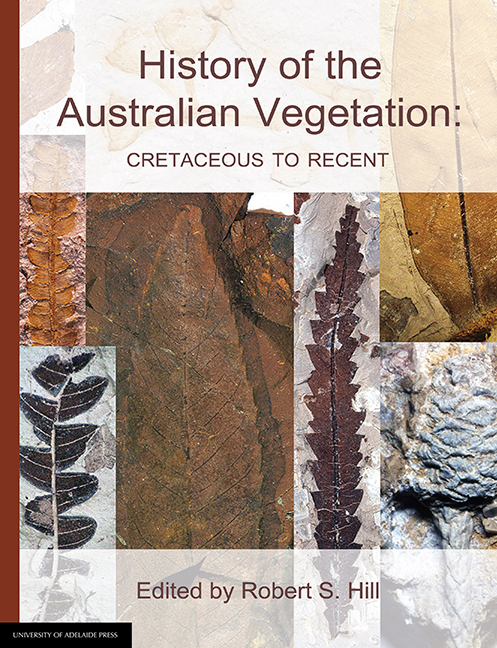Book contents
- Frontmatter
- Contents
- List of contributors
- Introduction to the 2017 edition
- 1 The Australian fossil plant record: an introduction
- 2 Maps of late Mesozoic-Cenozoic Gondwana break-up: some palaeogeographical implications
- 3 The background: 144 million years of Australian palaeoclimate and palaeogeography
- 4 Palaeobotanical evidence for Tertiary climates
- 5 Landscapes of Australia: their nature and evolution
- 6 Patterns in the history of Australia's mammals and inferences about palaeohabitats
- 7 Australian Tertiary phytogeography: evidence from palynology
- 8 Cretaceous vegetation: the microfossil record
- 9 Cretaceous vegetation: the macrofossil record
- 10 Early Tertiary vegetation: evidence from spores and pollen
- 11 The early Tertiary macrofloras of continental Australia
- 12 Cenozoic vegetation in Tasmania: macrofossil evidence
- 13 The Neogene: a period of transition
- 14 The Oligo-Miocene coal floras of southeastern Australia
- 15 Quaternary vegetation
- 16 The history of selected Australian taxa
- Taxonomic index
- General index
1 - The Australian fossil plant record: an introduction
Published online by Cambridge University Press: 25 July 2017
- Frontmatter
- Contents
- List of contributors
- Introduction to the 2017 edition
- 1 The Australian fossil plant record: an introduction
- 2 Maps of late Mesozoic-Cenozoic Gondwana break-up: some palaeogeographical implications
- 3 The background: 144 million years of Australian palaeoclimate and palaeogeography
- 4 Palaeobotanical evidence for Tertiary climates
- 5 Landscapes of Australia: their nature and evolution
- 6 Patterns in the history of Australia's mammals and inferences about palaeohabitats
- 7 Australian Tertiary phytogeography: evidence from palynology
- 8 Cretaceous vegetation: the microfossil record
- 9 Cretaceous vegetation: the macrofossil record
- 10 Early Tertiary vegetation: evidence from spores and pollen
- 11 The early Tertiary macrofloras of continental Australia
- 12 Cenozoic vegetation in Tasmania: macrofossil evidence
- 13 The Neogene: a period of transition
- 14 The Oligo-Miocene coal floras of southeastern Australia
- 15 Quaternary vegetation
- 16 The history of selected Australian taxa
- Taxonomic index
- General index
Summary
The living Australian flora is a complex mixture of species with widely varying distributions and interactions, covering the range from arid zone grassland to rainforest, alpine heath to mangrove swamp. The latitudinal range of Australia spans tropical to cool temperate climatic zones, and this is reflected in the extant vegetation, which is enormously complex (see Groves, 1981). Attempts to explain the distribution of Australian vegetation based solely on prevailing variables have been less than satisfactory. Australia, in all its aspects, is a product of its past. That is especially true of its flora and, unless the fossil record is properly considered, all attempts to explain vegetation patterns will be incomplete. Despite the complexity of the living vegetation, there has been a tendency to consider the past vegetation, especially that of the pre-Quaternary, as consisting in widespread, monotonously uniform communities. The recent explosion in information on Australian fossil plants shows that this perception was largely the result of a highly incomplete database, where the unknown areas were assumed to be the same as the small areas that were relatively well understood. It is now clear that past vegetation complexity, at least during the Cenozoic, was as high as, or possibly higher than, that seen at present. The past complexity is abundantly illustrated in this book, which may well represent the last occasion on which a thorough review of such a large period of time can be accomplished for the whole of Australia. Data are accumulating at a rapid rate, and almost every new site produces much that is novel, causing a reassessment of the prevailing hypotheses.
There is a long history of attempts to explain the origin and evolution of the Australian flora; some of these are well known, others more obscure. Hooker's (1860) discussion of the Australian flora provided a base of the highest quality, which slowly evolved into the invasion theory, perhaps best argued by Burbidge (1960).
- Type
- Chapter
- Information
- History of the Australian VegetationCretaceous to Recent, pp. 1 - 4Publisher: The University of Adelaide PressPrint publication year: 2017



